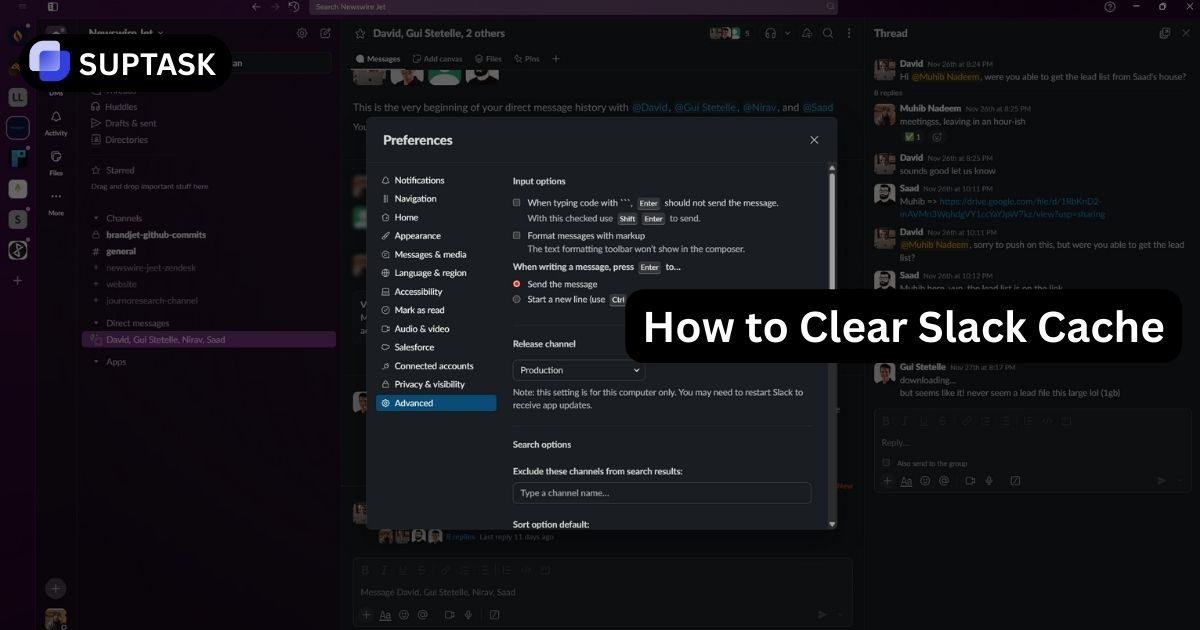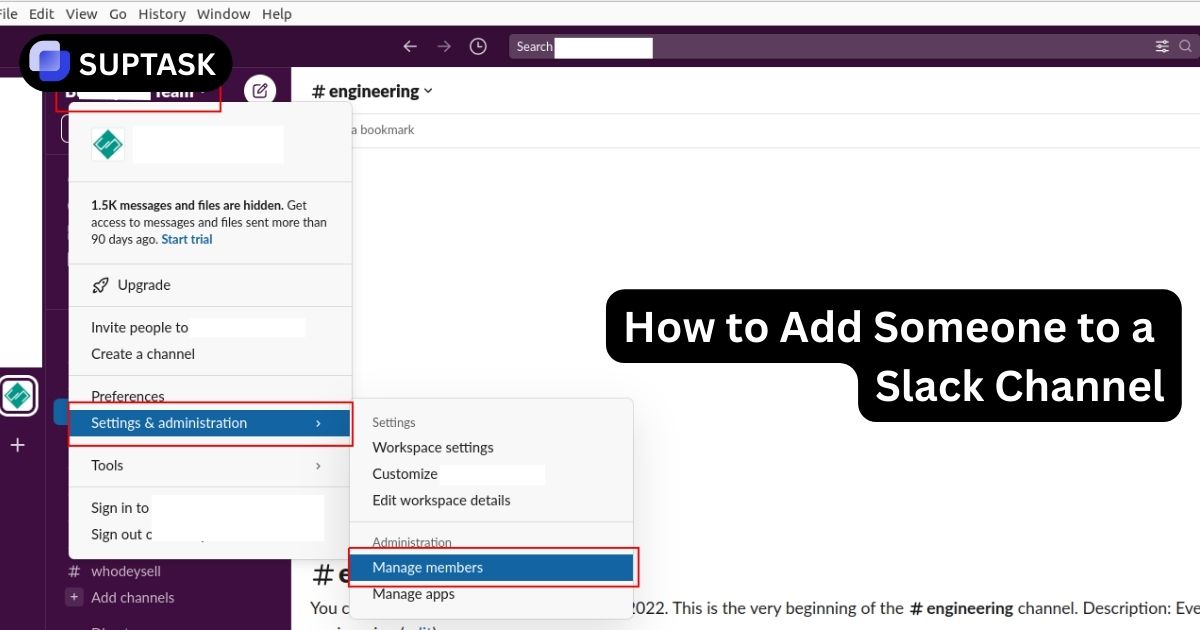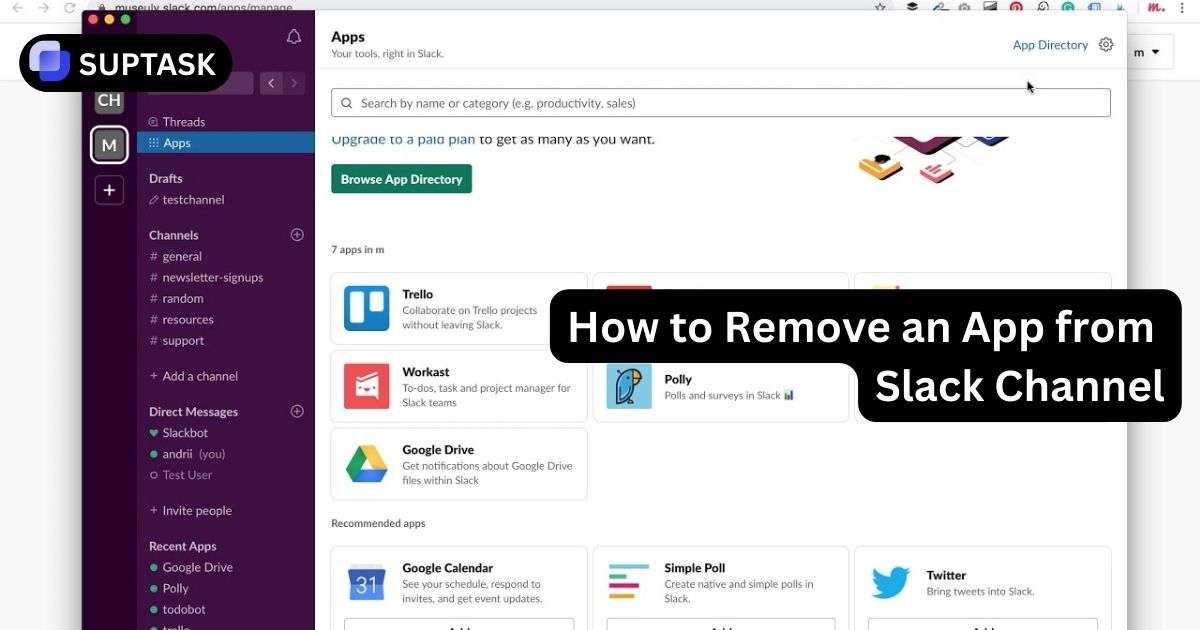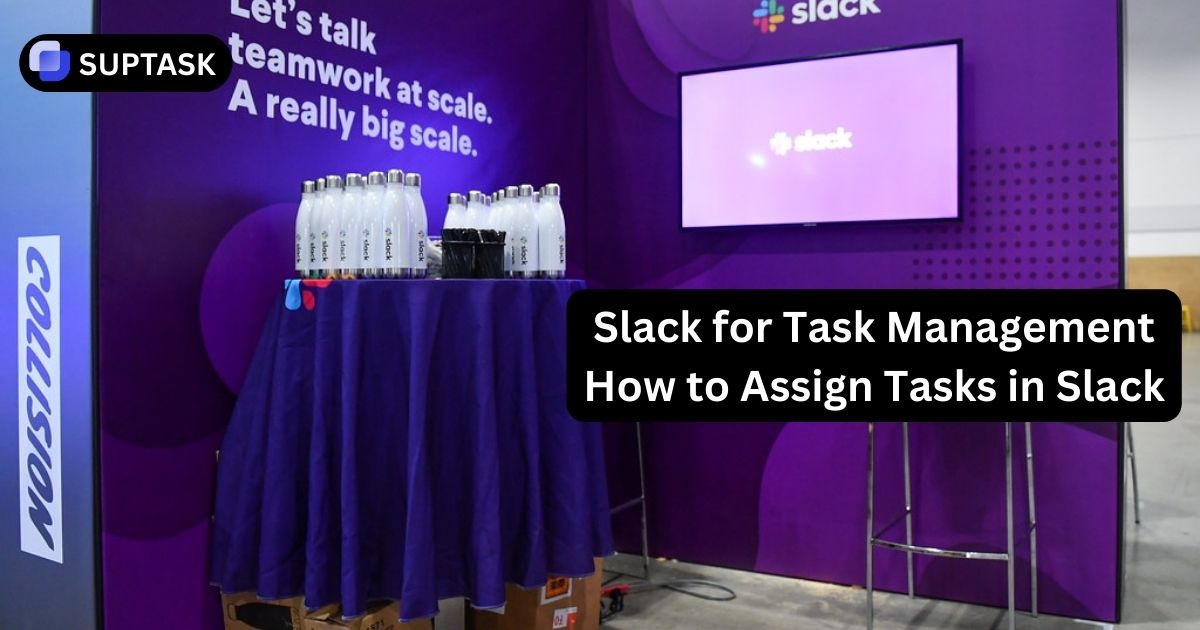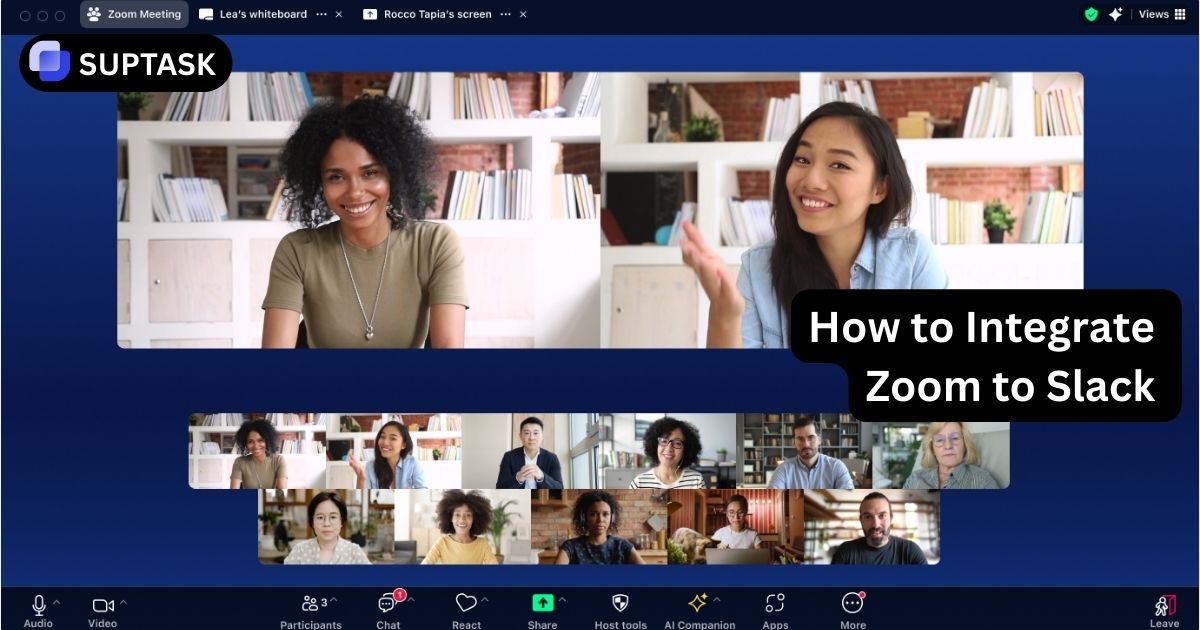Learn to initiate, manage, and enhance video conferences on Slack, with straightforward instructions on connecting with team members using various operating systems.
Get to grips with essential features like screen sharing and participant controls without the fluff. Whether troubleshooting an issue or optimizing your video call setup, this article gives you the necessary insights.
Key Takeaways
- Slack Video Calls enhance team communication by allowing video conferencing across multiple operating systems, and the premium versions support up to 15 participants, screen sharing, and are powered by Amazon services.
- Starting a Slack video call is straightforward, using direct messages and channels, where one can kick off personal one-on-one conversations or group discussions with accessible invitation and notification systems.
- While Slack does not offer advanced in-app video editing tools, it supports basic video sharing, screen sharing with annotation, adding captions for accessibility, and participant controls for effective communication and collaboration during calls.
Understanding Slack Video Calls
Slack Video Calls, a feature within the Slack platform, promote a culture of video-enabled collaboration.
This tool facilitates real-time face-to-face discussions, thus enhancing communication among team members. It works across various operating systems, including:
- Mac
- Windows
- Linux
- iOS
- Android
This video chat support, integrated into Slack’s mobile apps, facilitates live video conferences and video meetings for remote and hybrid teams, ensuring that distance is no longer a barrier to team collaboration. For more effective communication within your business, try the free version of Suptask.
With the free version, you can experience the convenience of these video conferencing apps for online meetings firsthand.
The video conferencing tool of Slack’s premium versions offers the following features:
- Can handle up to 15 participants in video calls, breaking past the one-on-one limitations
- Offers screen sharing
- Expected to be further enhanced through Slack’s partnership with Amazon Chime and Amazon Web Services
Slack Video Calls marks an evolution in video conferencing platforms, offering a comprehensive software solution for team communication and collaboration.
How to Initiate Video Call in Slack
Slack offers a simple process to initiate a video call, enabling swift and convenient communication.
From Direct Messages
1. Click on the conversation’s headphone icon to start a Huddle.
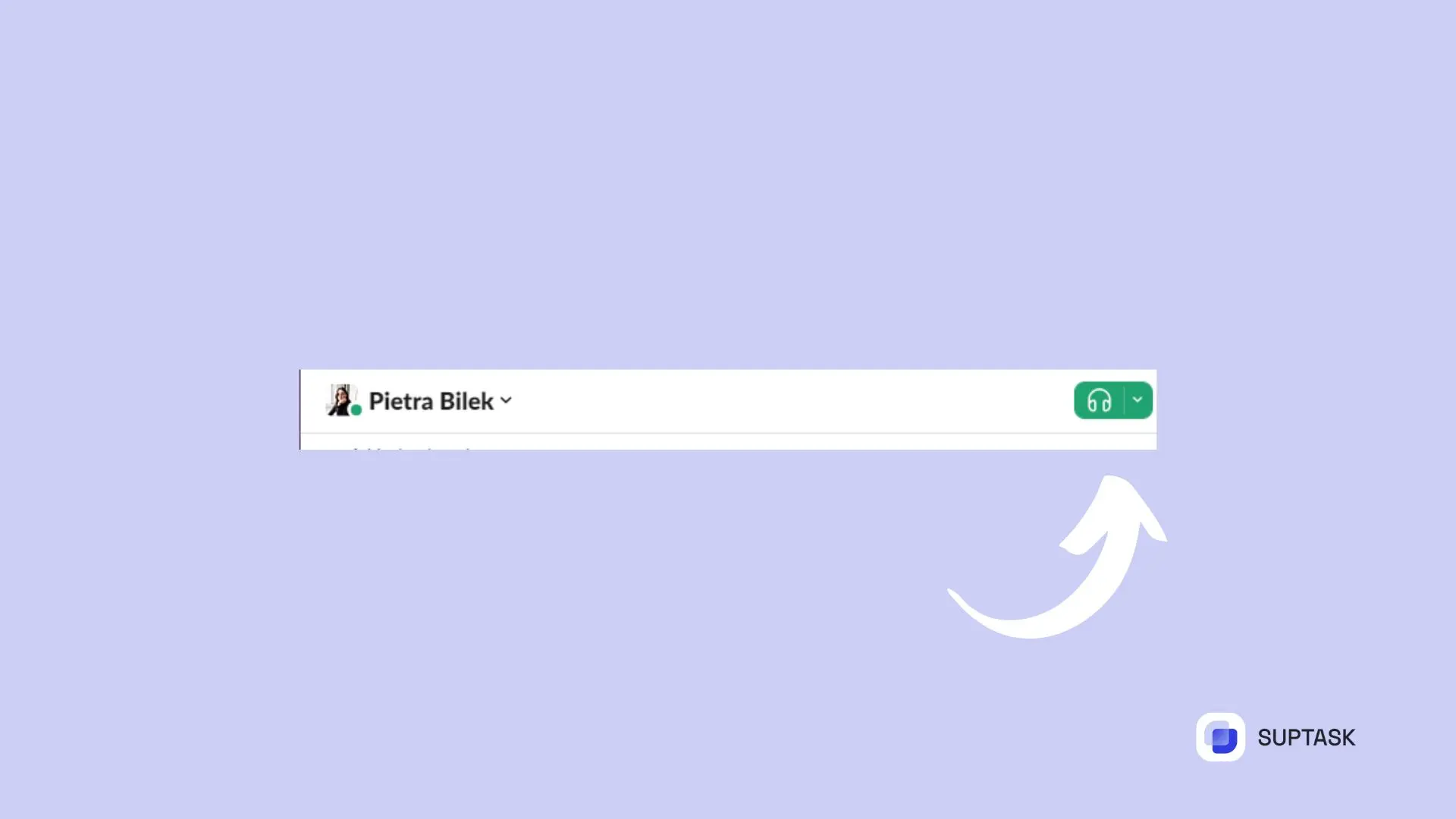
2. To turn on the video, click on the camera icon.
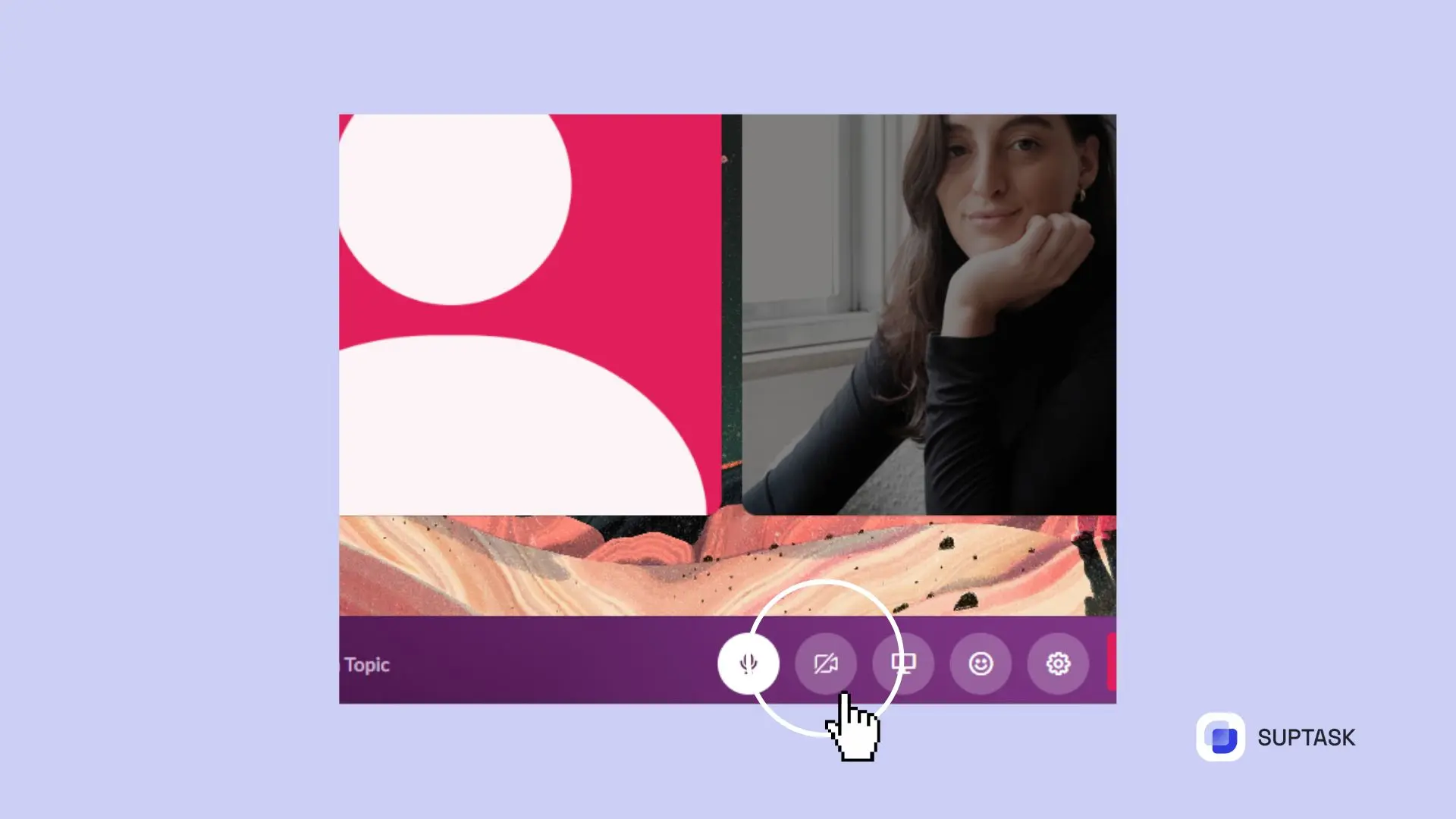
Direct messaging a video to a user via Slack offers several benefits:
- Personalized interaction
- Immediate notifications
- Enhanced collaboration among team members
- Easy sharing of insights, ideas, and project work
This feature enhances the collaborative nature of Slack, making it easier for team members to work together effectively.
In a Slack Channel
1. Click on the headphone icon to initiate a huddle within a Slack channel.
2. To turn on the video, click on the camera icon.
An invite is sent to all channel members, enabling collaborative discussions with up to 14 team members ensuring everyone is on the same page.
In addition, Slack provides the flexibility to send a direct call invitation within a channel to specific members by clicking the Add People button.
This generates an alert in the channel, inviting others to join the call. Thus, Slack enables streamlined communication, ensuring no team member is left out of the loop.
How to Share a Slack Video Call?
Sharing a Slack video call, whether within a channel or directly to a user, is straightforward. This feature ensures everyone stays on the same page.
Within a Channel
Sharing a video call within a Slack channel offers the following benefits:
- Instant notification to all members, inviting them to watch or comment on the video.
- Fosters an interactive and collaborative environment.
- Allows everyone to participate in the discussion.
Moreover, in Slack, you can:
- Share notes, links, and files in a huddle thread during the video call by clicking the arrow or threads icon in the huddle window.
- Have up to two people share their screens simultaneously during a huddle in a Slack channel, allowing participants to collaborate visually during the video call.
- Add emoji reactions, effects, or stickers to enhance communication.
This interactive sharing and collaboration feature, coupled with the option to add emoji reactions, effects, or stickers, makes Slack a comprehensive tool for team communication.
Directly to a User
Directly sending a video or audio call to a user triggers an immediate notification to the recipient, allowing swift interaction with the video content. This fosters a stronger rapport among team members.
To make these calls even more engaging, teams can pair them with quick clips created using text to video AI, turning important updates or instructions into short, visually appealing videos before sharing them directly.
To send a Slack video call link directly to a specific user, you can create a custom link by combining your workspace URL with the user’s ID and share it via direct message.
Users can obtain a member’s user ID by clicking the “More” button in the member’s profile and selecting “Copy member ID,” which can then be appended to the workspace URL to form a direct link to their profile or direct message (DM). This ensures that the user can join the video call conveniently.
Essential Features During a Slack Video Call
Key features in a Slack video call, like screen sharing tools and participant controls, facilitate effective collaboration and communication.
These features allow participants to fully engage in the conversation, share relevant content, and control their audio and video settings.
Screen Sharing Tools
Screen sharing during a Slack video call enables real-time collaboration on documents and visual aids. To share your screen on Slack, select the share screen icon from the video call menu; you can choose to present your entire screen or just an individual application window.
For a productive screen-sharing session on Slack, it’s advised to close any unnecessary programs, use a stable internet connection, and employ headsets or earphones to improve audio quality.
Slack’s screen sharing offers annotation features, which participants can use to draw on the shared screen, highlighting important information or guiding viewers through the content.
This interactive feature enables teams to concentrate on the task and collaborate effectively by presenting work directly through the platform.
Controlling Participant Actions
During a Slack video call, the host can mute a participant by clicking on their name and selecting ‘mute’ from the dropdown menu. This ensures a smooth and productive meeting experience, free from unnecessary noises or interruptions.
Furthermore, hosts can disable a participant’s camera by clicking on their video feed and selecting ‘disable camera’ from the options, ensuring that all participants feel comfortable during the call.
Hosts can set up permissions before a Slack video call starts to determine who can share their screen or speak during the video conference. Participants can mute their own microphone during a Slack video call by clicking the microphone icon in the call control bar.
Users can also self-mute or disable their own camera using the corresponding icons within the video call interface, ensuring control over their audio and video settings.
Enhancing Your Slack Video Experience
To improve your Slack video experience, you can personalize video settings and use file-sharing and collaboration tools. This ensures a seamless and efficient communication experience tailored to your needs and preferences.
Personalizing Video Settings
Personalizing video settings in Slack involves:
- Selecting a default camera and microphone from the Audio & Video preferences in the Slack settings
- Adjusting microphone settings to enable automatic gain control and noise suppression, ensuring clear and uninterrupted communication
- Customizing speaker output device preference in Slack’s Audio & Video settings, ensuring audio is directed to the user’s chosen speakers or headphones.
Quality microphones and headphones are recommended for minimizing background noise during video calls. If participants cannot hear you clearly, improving microphone input volume through computer settings can be a potential solution.
A headset can reduce echo, static, or poor audio quality, and turning off competing audio sources on the computer can minimize interference. These simple adjustments can dramatically improve your Slack video experience.
File Sharing and Collaboration
File sharing during a Slack video call is essential to efficient and productive meetings. The platform allows for the efficient sharing of files directly within the call, enabling participants to collaborate on documents in real time without disrupting the ongoing conversation.
This ensures everyone stays focused and engaged, working towards a common objective.
Troubleshooting Common Slack Video Call Issues
While Slack video calls offer numerous advantages, users may occasionally face issues. However, Slack provides various tools and resources to help troubleshoot these issues.
From using Slack’s connection test page to adjusting settings, there are multiple ways to ensure a smooth and uninterrupted video call experience.
You will be informed that the video cannot be displayed if you encounter a webcam issue during the Slack connection test. You can also run an audio and video test in Slack’s ‘Audio & Video’ settings to ensure your camera and microphone function correctly.
If screen sharing fails, you can check that Slack and system software are up to date, verify your internet connection, and consider restarting Slack or the device.
While these are standard solutions, Slack recommends contacting their support team with any persistent problems and providing details such as timestamps and screenshots for a more tailored solution.
Frequently Asked Questions
Can you video call through Slack?
Yes, you can video call through Slack with the free version for one-on-one calls or a paid plan for group calls with up to 15 people and screen sharing.
Is Slack huddle a video call?
Yes, Slack Huddles can include video using standard Slack video calling technology. You can start the Huddle with video or switch to video as needed.
Can I share my Slack video call with others?
Using the appropriate features, you can share a Slack video call within a channel or directly to a user.
Does Slack offer video editing features?
Slack does not offer extensive in-app video editing features like precise trimming or filters.



